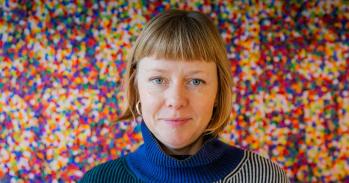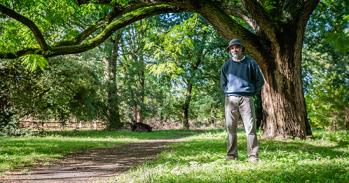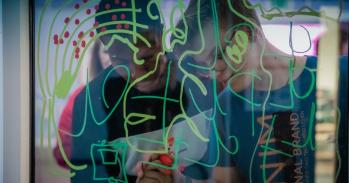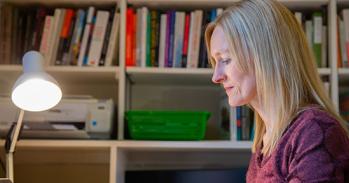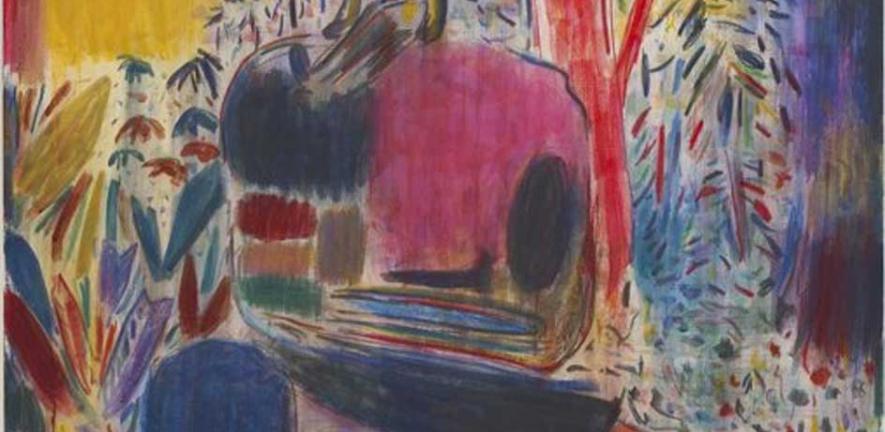
A free public lecture looking at the recent rise of the Danish contemporary art scene will take place at Churchill College on November 24, given by top art critic Lisbeth Bonde.
A free public lecture looking at the recent rise of the Danish contemporary art scene will take place at Churchill College on November 24, given by top art critic Lisbeth Bonde.
The last 15 years have been described as one of the richest periods in the history of Danish art, a new ‘golden age’ of talent and expression that is garnering increasing attention from the global art world. Lisbeth Bonde, art critic for leading Danish broadsheet Weekendavisen, will endeavour to introduce Cambridge to this surge in the Danish art scene as part of a free public lecture at Churchill College on the 24 November. The lecture will explore the work of Denmark’s leading modern artists and the impact of institutions such as the Danish Art Council.
Not since the romantic art of the early 19th century has Denmark had such a flourishing art scene, with many contemporary artists building reputations outside of Denmark. “Danish art from the last 15 years differs from the art two decades before by being far more engaged in society and the perspective of the viewer” says Bonde. “Many Danish artists have been educated abroad and live typically in Berlin or New York, but the art is still obviously influenced by the Danish society.”
The lecture will look at the work of some of the figureheads of the Danish scene, including artists such as Tal R, Olafur Eliasson, and the art collective Superflex. Bonde outlines some of the major artists of the new Danish golden age: “Tal R is an unconventional artist working mainly in painting. His art springs from stories, a figure or object that he transforms into complicated expression. Recent paintings engage with motives from across art history. Olafur Eliasson is a darling of the international art scene. A high-tech romanticist, his art interrogates the way the viewer’s senses work in perceiving his installations. He is renowned for his great and beautiful installations such as The New York City Waterfalls and The Weather Project, which was in Tate Modern in 2003.”
“Some of the most innovative art from the Danish new wave comes from the collective Superflex. Often perceived as the 'do-gooders’ of Danish art, their projects are related to economic forces, democratic production and self-organisation. Among other works, they've developed methods of producing bio-gas or soft drinks in collaboration with African or South American peasants, in an effort to expose oppressive economic structures through art. In 2008 they produced the video Flooded McDonald's which is an apocalyptic allegory of the fast food culture.”
The role of institutions in the emerging Danish art scene, such as the Royal Danish Academy and the Danish Art Council, will also be examined by Bonde. “The Art Council has been instrumental in creating a new Danish Golden Age, allowing young artists to network whilst abroad, and supporting publications and websites” says Bonde. “The Royal Danish Academy also played a vital part. Formerly a conservative institution, it woke up to artistic innovation in the 80s and began to embrace the vanguard. Although some of the younger artists have become more critical towards such institutions through their art, which they consider a part of the society's power structure.”
“The Danish art scene is far more pluralistic these days, utilising a wide variety of expressions, forms, themes and media, appropriating high and low culture. The international art market, always hungry for new subjects, has found in the Danish art scene a relatively uncultivated peripheral zone with huge potential to be discovered.”
The lecture ‘On Danish contemporary art’ by Lisbeth Bonde will take place on 24 November at 5.30pm in the Recital Room at Churchill College. For more information, contact Barry Phipps on bjp31@cam.ac.uk
This work is licensed under a Creative Commons Licence. If you use this content on your site please link back to this page.


